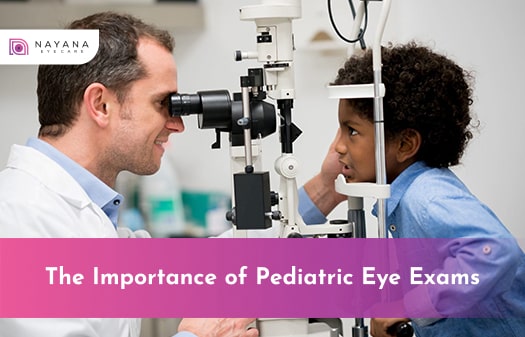
Ensuring that children receive early eye exams is crucial for their overall health and development. Early detection of vision problems can prevent long-term issues and support a child’s ability to learn and interact with the world around them. This article highlights the importance of pediatric eye exams and discusses common pediatric eye conditions.
1. Why Early Eye Exams Matter Developmental Milestones:
Children’s vision develops rapidly in the early years of life. Proper vision is essential for hitting developmental milestones, such as hand-eye coordination, reading, and recognizing faces and objects.
Learning and Academic Performance:
Vision problems can significantly impact a child’s ability to learn. Approximately 80% of what children learn in school is through visual information. Undetected vision issues can lead to academic struggles, frustration, and behavioral problems.
Early Detection of Eye Conditions
Many eye conditions, if caught early, can be treated more effectively. Early detection can prevent the progression of certain conditions that could lead to permanent vision impairment or blindness.
2. When to Schedule Pediatric Eye Exams Newborn to 6 Months:
It is recommended that newborns have their first eye exam between 6 to 12 months of age. This initial exam can help detect congenital eye conditions such as cataracts, glaucoma, and retinoblastoma.
6 Months to 3 Years:
Follow-up exams should occur around age 3. These exams assess visual acuity, eye alignment, and overall eye health.
Preschool to School Age:
Children should have their eyes checked before starting school and then regularly as they grow. Annual eye exams are recommended to ensure ongoing eye health and address any emerging issues.
3. Common Pediatric Eye Conditions Amblyopia (Lazy Eye):
Amblyopia occurs when one eye is weaker than the other, leading to poor vision development. Early treatment with glasses, patches, or eye drops can strengthen the weaker eye.
Strabismus (Crossed Eyes):
Strabismus is a condition where the eyes do not align properly. It can cause double vision and affect depth perception. Treatment may include glasses, eye exercises, or surgery.
Refractive Errors:
Conditions such as myopia (nearsightedness), hyperopia (farsightedness), and astigmatism are common in children. These can be corrected with glasses or contact lenses.
Conjunctivitis (Pink Eye):
Conjunctivitis is an infection or inflammation of the conjunctiva, causing redness and discharge. It is often treated with medicated eye drops or ointments.
4. The Role of Parents and Caregivers Observing Symptoms:
Parents should be vigilant for signs of vision problems, such as squinting, covering one eye, tilting the head, or complaints of headaches and eye strain.
Encouraging Healthy Habits:
Encourage children to take breaks from screens, play outside, and engage in activities that promote eye health. Providing a balanced diet rich in vitamins and nutrients also supports eye health
Conclusion
Regular pediatric eye exams in Kakinada are essential for ensuring your child’s vision health. Early detection and treatment of eye conditions can prevent long-term vision problems and support your child’s overall development. Schedule routine eye exams for your child to help them see the world clearly and achieve their full potential




